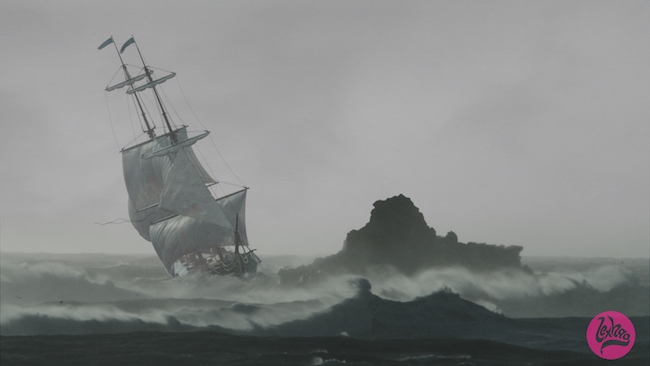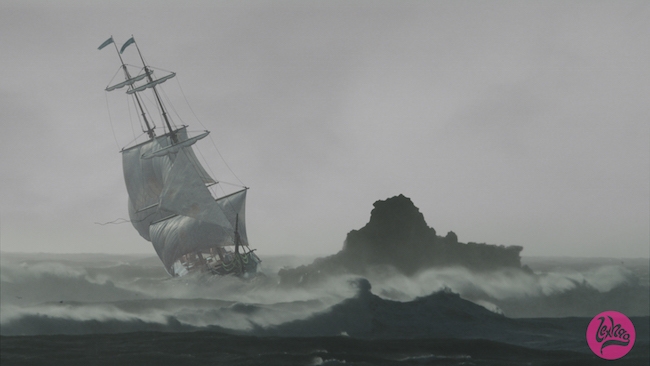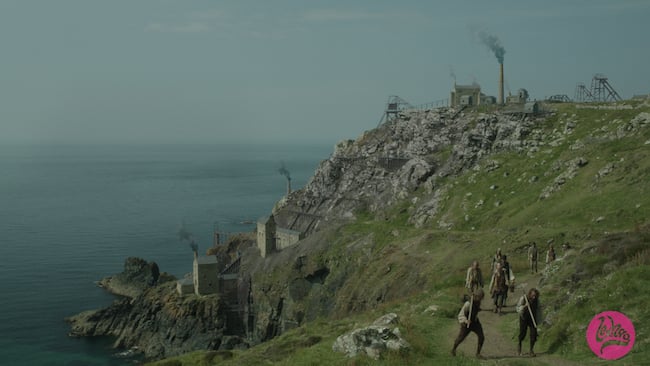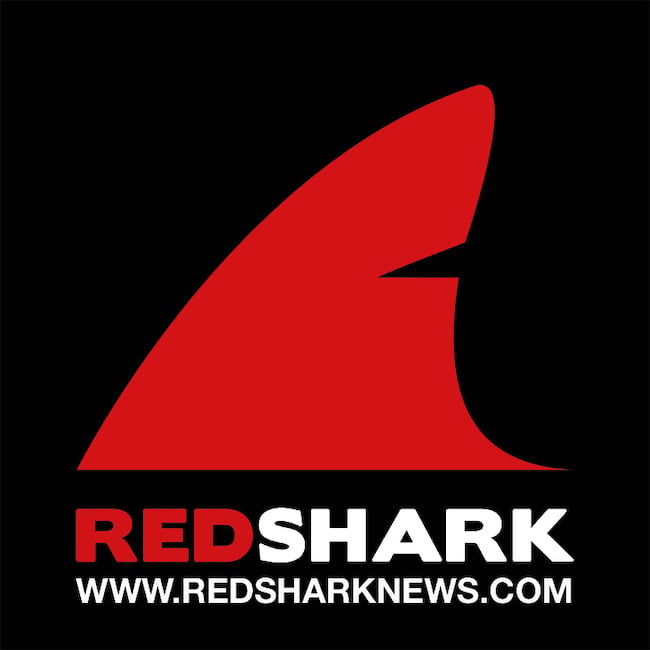
 CG ship in real ocean
CG ship in real ocean
The BBC has a deserved reputation for the general awesomeness of its period dramas, and one of the things that keeps them on track and within budget is a surprisingly large amount of VFX.
This is a case study that we got sent detailing how VFX house Lexhag faced the challenge of recreating significant swathes of 18th century Britain on the BBC’s Poldark with a little help from ftrack software, LIDAR and more. We don’t often run such things, but thought this was an interesting enough read to justify a couple of 1000 words on pre-Victorian Cornwall.
First, some background
Period drama has always been popular, but in recent years it’s experienced an explosion in demand. Arguably it was the high production values and top-notch writing of Downton Abbey that paved the way for more recent examples like Wolf Hall, Jonathan Strange & Mr Norrell and Ripper Street – along with a healthy dose of VFX mastery that helps bring these bygone eras to vivid life.
One such example of this is the BBC’s second reenvisioning of Poldark – the first airing between 1975 and 1977. This updated take on Winston Graham’s historical novels tells the story of the eponymous Ross Poldark, who, in the late 18th century, returns from a three-year stint in the army to the tin mines of his Cornish hometown.
Dark, dramatic and oozing atmosphere, the story of Poldark is rich indeed, its narrative unravelling across the southern coasts of England across eight eventful episodes. It was the London-based studio Lexhag that brought this new vision to life for the BBC, using a mix of LIDAR scan technology, full-CG ship elements and the organisational capacity of ftrack.
A flair for drama
Based in the beating heart of London’s visual effects community, Soho, Lexhag is a boutique studio with a speciality in the period drama genre. Previously, Lexhag has worked on shows as prestigious as Downton Abbey, The Mystery of Edwin Drood and The Paradise. It’s also had forays into such alternative genres as zombie survival in Outpost III: Rise of the Spetznaz and psychological horror in Dementamania. “We’ve worked on a lot of different things over the years, but I’d say 60-70% of our work is in drama – we’re traditionally very strong there,” says Dan Marbook, VFX producer at Lexhag. “We won an RTS Award and a BAFTA in 2012 for our work on The Fades, and recently just completed work on Poldark.”
For Hasraf Dulull, also VFX producer at Lexhag, TV drama today is reaching for ever higher production values, facing many of the same challenges as top-tier Hollywood blockbusters. “There’s a lot more budget available for visual effects, and they’re being incorporated into the production schedule with greater frequency to bring these historical worlds to life,” he explains. “What we’re trying to do is make the TV executives think a bit differently about how VFX is used. VFX doesn’t just mean post-production anymore – it’s pre-production too. We need to be on board a lot earlier, the same as with feature films. And that’s the kind of approach we’re taking with projects like Poldark.”
Lexhag prefers to work not just as a post house, but as a second unit for productions, even going on set to capture their own VFX elements where necessary. “We did that on Downton Abbey for the Christmas special,” says Marbrook. “Using those techniques means we can offer up shots that other facilities might not be able to at the price we offer. We really do think a great deal about how we’re going to achieve the effects we’re brought on to deliver…”
Scan the horizon
Poldark perfectly exemplifies this hands-on approach to VFX production. Among other tasks – which included the creation of everything from a full-CG butterfly up to a full-CG ship – the Lexhag team was brought on to enhance the rolling, panoramic shots of the English southern coast, which meant a blend of matte painting work and set extensions.
In order to accurately replicate the 1700s seafront, Lexhag used the latest in LIDAR technology to scan on-set elements.
“The investigation that we do into new types of techniques to be able to achieve what we want to do for our clients really is second to none,” says Marbrook of Lexhag’s work. “We focus on using technologies that will really help streamline our business and produce the best work for the client, and that’s why we’re doing a lot of work with LIDAR scanners at the moment. They can geometrically map areas and buildings before we extend them in CG, so we know they are 100% accurate and will match up to the plate.
“A lot of our shot design and thought processes go into what real elements we can get into the camera first, so that’s where the LIDAR implementation comes from. We’re reluctant to just whack up green screens, even though they do have their value in the right time and place.”
The Lexhag team would use LIDAR technology to scan derelict buildings on the sweeping plains of Cornwall, and then use that data to build out the mines that once pocked the landscape in the late 1700s. The accuracy that this data gave the team enabled them to build fully believable, authentic backdrops for the series.
“LIDAR scanning is an architect and builders tool, really,” says Marbrook. “It sends out either a long- or short-range scan using two million lasers that face out of the scanner. It gives you a complete reading that we can then feed into Maya or 3ds Max, giving us a digital map of that landscape, building or room. This gives us a lot of options – we can build a full digital environment out of it, or do some previs, or just use it as a snapshot of the scene to makes notes on. We can map still photography on top of those scans too, which means the textures are true to life. We’ll then have an asset to utilise across the series that the production wouldn’t have had otherwise.”
For Lexhag, preparation is key when working on a LIDAR scan, and the team hopes to incorporate production tracking tool ftrack into the process more in future: “We’d expect to be booked out for a day to go and prep and completely scan an area,” says Marbrook. “To give ourselves the best possible chance of success, the more preparation we do, the better. We’re currently looking for ways to use ftrack to input our LIDAR scans. We supply sign-off documents back to production, which include the data we’ve collected from the scans, the photography, the shot compositions and pre-vis. We want that to be traceable through to the generation of the actual shot. That’s next.”
Rocking the boat

One of the most demanding tasks facing the Lexhag team on Poldark was the creation of a pre-1800s galleon, seen braving the violent Atlantic waves before suffering a catastrophic shipwreck. While the shot itself was a composite – the background and water elements being shot in camera on a particularly stormy day off the coast of Cornwall – the boat itself was fully CG.
When it comes to period drama, authenticity is key. That meant a great deal of research into the way older ships were constructed in order to sell the four shots to the audience. “We did a lot of research into 18th century ships,” remembers Marbrook. “How much rigging would they have? Where would the sales be? Did it have a keel? This would all have an influence the movement of the ship and alter the way it behaved when on water.”
Lexhag used ftrack to follow all of the different tasks that would need to be completed to build the boat, including the modelling, the animation, the composition and the render time.
“It’s really important that you structure those out as separate tasks, because when it comes to full-CG shots they take an awful lot of render power. It takes time to process all of that,” explains Marbrook. “Also, there are lots of different artists working on different aspects of that build: someone will be doing the animation, another artist doing the model, and another doing research on the simulations and the way the sails would interact with the wind. As a producer I was able to track all of those different tasks, and when certain elements of the asset were ready. I could then plan for compositing the asset to a finished standard and then have that ready to render and be delivered over the client. It just made everything that much faster and easier.”
Before Lexhag had to sell the audience on the believability of the ship, however, they needed to sell it to the client – a buy-off process that can often be more challenging than the creation of the ship itself. “Sign-off procedure is rarely straightforward – it’s getting the buy-in from the client that takes time and effort,” says Marbrook. “Thankfully, tracking tools like ftrack come in really handy with that. It allows you to have individual elements of the boat in either a signed-off state or a not-completed state. Signed off means that the client is happy. Not completed means there are more notes to address – and getting that right is really important for a production. Say, for example, you get to the compositing stage and the client mentions there’s something wrong with the animation or modelling – that can take a really long time to unpick what you’ve done. So, you need to make sure you have sign-off confirmed for those elements ahead of time, and ftrack is a great guide for that: it enables us to say ‘this milestone is complete’ and refer back to an email from the client at a specific time confirming that sign-off.
“Managing client expectations is a huge part of the visual effects process, and ftrack is well on the way to giving you the tools to be able to overcome those problems.”
Professional production management
Lexhag first adopted ftrack in September 2014, using it on the first block of Poldark but also on other shows that came through at the same time, such as BBC drama The C Word. “At the time of writing, we’ve been using ftrack for about 18 months to a year,” explains Marbrook. “We started using it on a Scottish film project called Swung, and then for a movie called Chosen. We had used other production tools in the past, but we found the artists weren’t using or updating the projects in quite the right way. Also they felt like glitzy Excel spreadsheets, and could be easily broken. ftrack looks a lot nicer and works more towards the way that we tend to do things.
“It’s really simple and straightforward, which is really helpful in an episodic production like Poldark,” he continues. It’s intuitive for a reason – you want every artist to be able to just look at what they’ve got to do that day very easily, which keeps the production running smoothly. We don’t have to train the tool – the artists can just can sign in, see what they need to do that day, and then move along each task until they’ve completed them. You don’t really want artists doing anything other than that; you just want them focusing on the job they’re doing and the creative side of the production.”
On Poldark specifically, ftrack offered great assistance in keeping the production on schedule – something that is absolutely imperative when working with complex assets such as on-set LIDAR scans and full-CG models.
“ftrack really helped with breaking up the tasks into subsets and letting each artist just focus on the task in hand,” says Dulull. “Time logging allows us to track the project’s main resources, but also there’s the man spreadsheet with the task status, which comes in very useful when using it in conjunction with filters. It makes it very easy to send status reports to our clients and post supervisors on a daily basis.
“Also, it’s just such a great time- and money-saving tool,” he continues. “It definitely minimised emails, which we are not a fan of since you always end up losing comments and feedback stored in email threads. Also, we can instantly tell when a shot is about to go over budget – this would flag up to us in advance to ensure we don’t end up digging into our own funds to make up for overages.”
Thanks to the simple and straightforward nature of ftrack, Lexhag was able to keep the complexity of Poldark in check. “ftrack is definitely a good start,” says Marbrook. “I know other tools require a team of people to manage them – why do you need a team of managers to manage a management tool? It tells you that something is amiss there. With ftrack that’s not necessary. It’s got a lot of potential, and has helped us simply manage a lot of big projects. We’ve won future business of the back of Poldark, so will definitely be using it again.”
Tags: Post & VFX


Comments